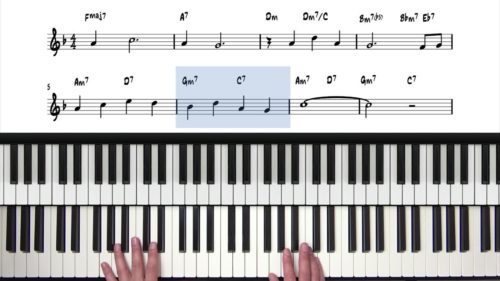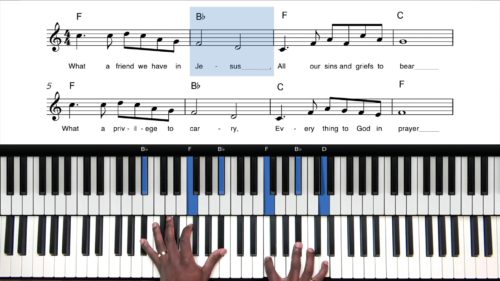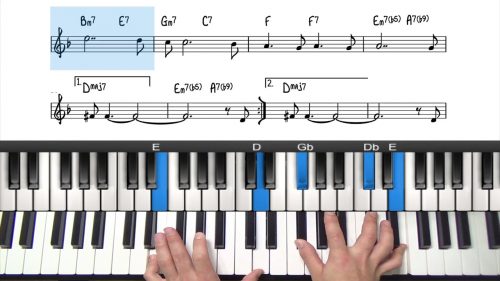Reshaping The Melody
In this lesson we will use the original melody of “Misty” as a primary source inspiration for creating our improvised melody lines. Jazz standards become jazz standards for a reason, and that’s because they most often have carefully constructed melodies that stand the test of time.
Create Synergy Between The Tune & Your Solo
When improvising, the melody of the tune itself can be a wonderful source of inspiration. This also helps to create a level of synergy between the original melody and your improvised solo.
We explore how we can simply rearrange and rephrase the notes of the melody to create a structure and framework around which we improvise.
The Original Melody As A Template
After watching this lesson you will understand how effective it can be to use the melody as a template for sculpting the flow and the contours of our improvised melody lines.
In the next lesson we are going to introduce arpeggios patterns into our improvisation using triads, 7th chords, chord extensions. We will also continue our study of alterations and altered arpeggios.
Lesson Downloads
-
Melody Inspiration Examples File Type: pdf
Practice Tips
-
Simply changing the order of the notes can create beautiful melodic ideas and phrases.
-
Use the ‘landing notes’ of the original melody, but approach them differently with chromaticism, approach patterns, and enclosures.
-
Learn the altered lick for C7 and we will explore this in more detail in the subsequent lessons in this module.








Hey Hayden,
Great lesson. I personally find it difficult to think about what the notes on the melody are “on the spot” to improvise something that sounds coherent and with synergy to the original melody.
When it comes to improvising, I often work on different ideas when trying to improvising over the chord changes until I can “compose” some different lines over these changes (e.g. I have 3-4 different melodic lines over the first 3 bars of Misty already rehearsed that I can use interchangeably whenever I solo over the song). However, I’m not sure if that defeats the purpose of improving as I am playing something I already pre-established from the times I have played it, but will at least give me the confidence that I know it will at least sound better than playing notes on the spot that I’m not sure will sound good or not.
Not sure if this is a normal feeling when being a beginner improviser or even as an experienced one but I’d like to know your thoughts on this and if this is something I should continue to pursue or if I should embrace being sporadic when playing over a solo 😅. Let me know of any of this makes sense and thanks again as always
Hi Jose,
My view is that what you talk about here is one of the main misconceptions with improvisation. When I’m improvising, I’m certainly not inventing everything I play on the spot.
There is certainly an element of spontaneity but at the same we are quoting melodic ideas and phrases that we have transcribed, transposed, and practiced.
Playing licks and lines are small pieces of vocabulary that we sow together into longer improvised solos, which you could liken to having a conversation.
It can also be useful to learn patterns based on specific interval relationships which serve as another piece of vocabulary to intertwine with our licks and other lines.
From the sounds of it you are very much on the right path here and I recommend you to continue exactly what you are doing.
Cheers,
Hayden
Thanks Hayden. That’s much more reassuring 😁